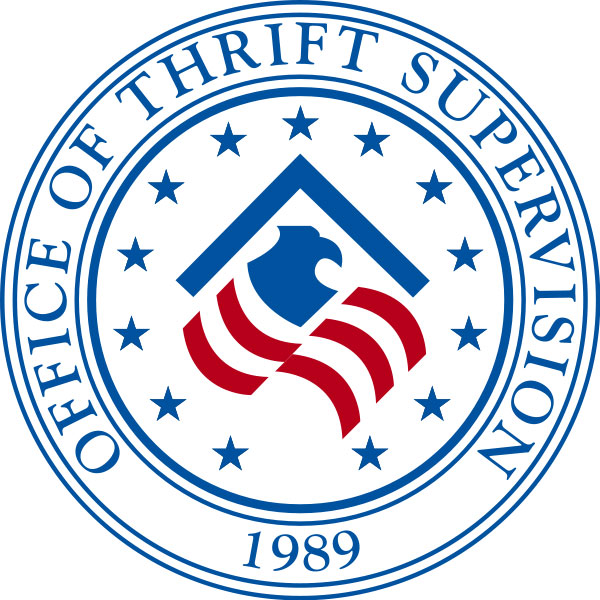Agency at Forefront of Mortgage Crisis Making a Comeback
When the Office of Thrift Supervision failed to notice a meth addict was mortgage supervisor at Washington Mutual, its days might have appeared numbered. But thanks to insurance firms looking to pick up government bailout money, it could rise again.
Jul 31, 202048.5K Shares656.4K Views
Just a few months ago, after the failures of Washington Mutualand IndyMac Bancorpshook the financial world, industry consultant Bert Elywould have bet it was time to shut down the Office of Thrift Supervision.The government regulator doesn’t exactly have a track record to brag about: It’s at the forefront of the most severe housing market meltdown in a generation. The government last year seized three of the largest institutions it regulates. It oversaw Washington Mutual, by far the largest bank failure in American history. Officials on both sides of the political aisle, from Treasury Secretary Henry Paulson to regulatory experts, want to see it disbanded.
Illustration by: Matt Mahurin
But these days, Ely isn’t so sure. Although yet another scandal hit the OTS recently – a senior regulator was demotedafter allegedly approving backdated IndyMac documents that made the bank appear more viable than it actually was, two months before it failed – the OTS may have discovered a way to survive. The agency, the primary regulator for savings and loans that specialize in mortgage lending, is finding new customers – and supporters – in the insurance industry.
At least three large insurance companies are waiting for approval to buy troubled thrifts and become eligible for bailout money from the government’s $700 billion Troubled Assets Relief Program, both the firms and the industry’s trade group said. The intent of TARP was not to help insurers buy ailing thrifts, and the insurers themselves are not in financial peril. But the companies applied in November, on the deadline for signing up for TARP money, to become savings and loan holding companies. The move would allow them to buy thrifts and qualify for government help – and, as an added bonus, be regulated by the OTS, instead of subject to stricter oversight by the Federal Reserve, Ely said. American Banker reportedthat four companies reached out to OTS to find troubled thrifts for them, and OTS cooperated.
The deals are still pending, OTS spokesman William Ruberry said. Until sales of the thrifts are final, the Treasury Department can’t make a decision on awarding the funds. One firm, Aegon NV,has since has withdrawn its application. But Jack Dolan, spokesman for the American Council of Life Insurers,an industry trade group, said additional insurers also have sought to buy thrifts and get TARP money, although his group doesn’t track the exact number. “The list may be longer” than just the three companies, he said.
Ely said the fact that insurers are trying to forgea partnership with the OTS to get the bailout funds means the troubled agency has gained some powerful political friends, who might not just sit back and watch if a new Obama administration tries to downsize or eliminate the OTS. Paulson last April calledfor the agency to be folded into the Office of Comptroller of the Currency, the nation’s top banking regulator. President-elect Barack Obama pledgedrecently to substantially overhaul the financial regulatory system.
“I was ready to say the OTS was history, but now I’ve changed my handicapping system,” said Ely, a leading banking industry observer. “It has gained a new set of allies – the insurance industry.”
The notion of insurance companies buying thrifts to get government money and avoid stricter federal regulations at the same time should be troubling, Ely said. If the companies bought banks instead, they could still get TARP money – but as bank holding companies they would be subject to tougher oversight, including more stringent requirements for reserves set aside to cover possible losses, among other things. “I can’t help but conclude that plays a role in why these companies are going out and buying crappy thrifts,” Ely said. “This ought to be generating some questions and concerns.”
Arthur Wilmarth,a George Washington University law professor who specializes in banking regulation, said he also believes insurers are drawn by OTS’ reputation as a “loosey-goosey” regulator, likely to go easy on its customers. “It’s not like there aren’t any sick banks to buy,” Wilmarth said. “There are 171 or so banks on the FDIC problem list.They must think that, at least for a time, they’ll be under an easier regime.”
The three firms that filed on the TARP deadline are the Hartford Financial Services Group, Lincoln National Corp., and Genworth Financial Inc. Representatives for Hartford and Genworth declined comment. Lincoln National did not respond to a request for comment. Aegon said in a statementit anticipated a stronger 2009 and decided not to seek TARP money. Private equity investors seeking to buy IndyMac also want to operate as a savings and loan holding company and be overseen by the OTS, the agency said.
Dolan, however, said he didn’t believe the insurers chose to buy thrifts just to come under the OTS umbrella. “Thrifts and banks do function somewhat differently,” he said. “The reason some insurers may be seeking thrift charters is that they fit the business model better than a bank charter.”
But regulatory experts say they see little other reason why insurers would choose specifically to buy thrifts, besides the OTS’ role in regulating them. As bank failures mount, they say, the agency’s actions during the housing boom, and its zeal for deregulation during the past eight years, are under closer scrutiny.
Patricia McCoy,a University of Connecticut law professor who specializes in subprime securitization and banking regulation, said inadequate OTS oversight in the past few years has included firms from failed subprime lender Countrywide Financial Corp.to insurance giant AIG and its involvementin credit default swaps. (AIG bought a savings and loan nine years ago.) The failures show how entrenched the agency’s problems have become, she said.
The OTS has been headed by “two very ideologically tilted directors who believe in deregulation with a passion,” McCoy said: James Gilleran,who began his term in 2001, and current director John Riech,who took office in 2005.
In 2003, Gilleran posed with the three other federal banking agency officials for a phototo illustrate the Bush Administration’s commitment to cutting red tape. Gilleran wielded a chainsaw instead of garden shears.
A review of the agency’s history of enforcement actions priorto bank failures or takeovers show that its actions were either late, or inadequate, McCoy said. Thrifts would be cited for compliance problems with flood insurance certificates, for example, rather than mortgage quality. The IndyMac backdating controversyis the latest debacle that should put an end to the question of the agency’s ability to function in its current form, she believes.
“The OTS is the worst federal regulator on the block,” she said. “It has a culture of being so permissive and cozy with the thrifts it regulates, that you can’t really break it without major reform. What we’re seeing is not only an attitude from the top but a pervasive way of doing business that has permeated even the front line examiners at OTS.”
Washington Mutual, which was seizedby federal regulators in September, serves an example, she and others said.
The OTS had examiners on site at WaMu, “all the time, 24-7, and 365 days a year,” said Wilmarth, of GWU. Yet regulators somehow missed big problemsat the institution, including those involving John Parsons, a supervisor of a mortgage processing center and a methamphetamine addict. Parsons told the New York Times in a jailhouse interviewthat his job was to churn out loans without regard to the borrower’s income or assets. And his drug problem was no secret, the Times said:
“„“In our world, it was tolerated,” said Sherri Zaback, who worked for Parsons and recalls seeing drug paraphernalia on his desk. “Everybody said, ‘He gets the job done.’”
“You would think they might have noticed that,” Wilmarth said. “How could they not have?”
The case of Darrel Dochow,the senior employee demoted in December over the backdated IndyMac documents, also summarizes the agency’s problems.
The Treasury Department’s inspector general concludedthat Dochow approved an IndyMac strategy to overstate the strength of its financial condition, shortly before its failure in July, which cost the federal bank insurance fund nearly $9 billion. OTS also allowed other troubled banks to record capital infusions earlier than they had actually received them, which made them appear to be more financially viable than they actually were, the inspector general found.
It wasn’t Dochow’s first brush with trouble. Dochow was demoted from his position as head regulator of the Federal Home Loan Bank Board over his role in putting off for two years the shutdown of Charles Keating’s Lincoln Savings & Loan,which collapsed in 1989, one of the most well-known bank failures of the savings and loan crisis. McCoy said that keeping the thrift open was an unnecessary move that ended up costing taxpayers. “Lincoln did a huge amount of damage,” McCoy said.
The Federal Home Loan Bank Board was replacedby the OTS in 1989, as a move to tighten regulatory standards. Dochow and many other former employees, however, were hired on, McCoy said.
Dochow worked his way back up the bureaucratic ladder at OTS, and redeemed himself in 2006 by helping to persuade Countrywide Financial Corp. to switch its regulator from the OCC to the OTS, according to a Washington Post probeof the agency. The story described the OTS as having an “overly close identification with its banks.”
Aided in part by the Countrywide deal, Dochow was promoted to head of the agency’s western regional district by 2007, McCoy said, giving him the distinction of being at the center of two of the worst bank crises in recent history.
But OTS’s issues go beyond Dochow. As GW’s Wachter noted, the OTS competes with other regulators for its customers and relies on fees it charges the banks it oversees, giving it a problematic setup similar to that of credit rating agencies. Adding insurance companies into the OTS mix can only make things worse because of the secrecy and lack of openness regarding the TARP program, Wilmarth said. “There’s no transparency here,” he said.
But Ruberry, the OTS spokesman, said OTS unfairly gets tagged with responsibility for large bank failures, considering companies such as Citigroup and Wachovia, which are regulated by the Federal Deposit Insurance Corp., also would have failed, but were helped outby the government. Thrifts also were more vulnerable because of their emphasis on mortgage lending. “It hit the industry particularly hard,” he said.
He also said it wasn’t true that the OTS went easier on banks than other regulators did. The agency did the best regulatory job it could during the housing boom, considering the large majority of subprime loans were made by independent lenders, not OTS banks, he said. Congress, Ruberry added, will have to decide the agency’s future, but the OTS believes it has a necessary role in representing smaller, community banks.
Despite all the controversies, the OTS could end up surviving, McCoy and others predicted.
Pairing with insurance companies to rebuild its customer base could strengthen the agency and help it fend off reformers, McCoy said. And, as Ely pointed out, insurers have a well-funded lobby to come to the agency’s side.
“The insurance companies WILL try to defend the existence of the OTS,” McCoy said. “This is an agency fighting for its life.”
With the help of government bailout money and powerful friends, it just might succeed.

Rhyley Carney
Reviewer
Latest Articles
Popular Articles

